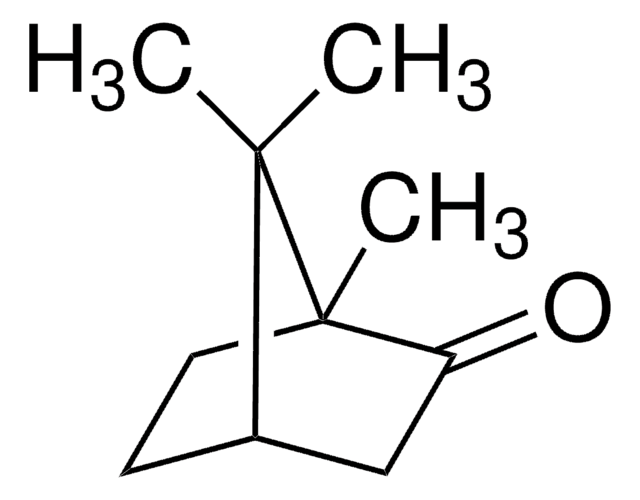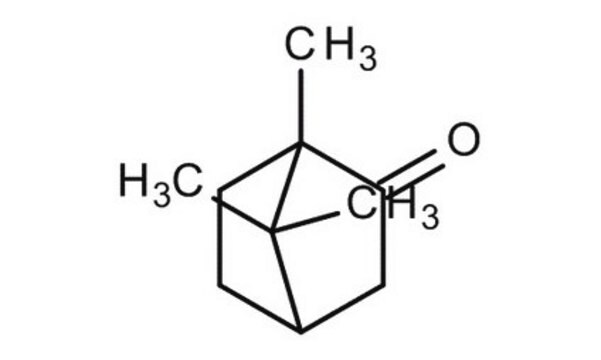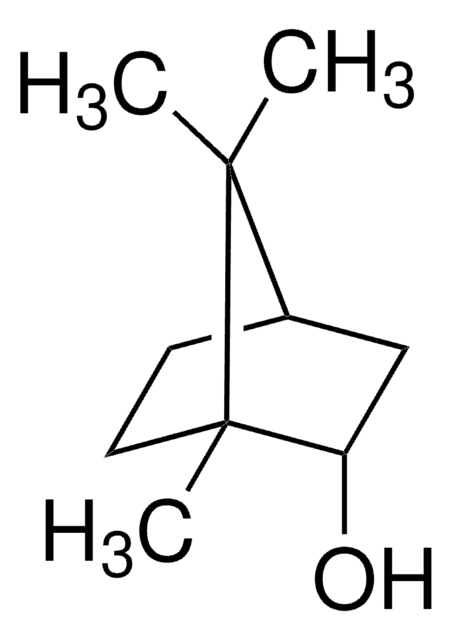02070595
Camphor (dl)
primary reference standard
Synonyme(s) :
(±)-Camphor, 1,7,7-Trimethylbicyclo[2.2.1]heptan-2-one
About This Item
Produits recommandés
Qualité
primary reference standard
Densité de vapeur
5.2 (vs air)
Pression de vapeur
4 mmHg ( 70 °C)
Durée de conservation
limited shelf life, expiry date on the label
Limite d'explosivité
3.5 %
Fabricant/nom de marque
HWI
pb
204 °C (lit.)
Pf
175-177 °C (lit.)
Application(s)
cleaning products
cosmetics
flavors and fragrances
food and beverages
personal care
Chaîne SMILES
[H][C@](CC1=O)(CC2)C(C)(C)[C@]12C
InChI
1S/C10H16O/c1-9(2)7-4-5-10(9,3)8(11)6-7/h7H,4-6H2,1-3H3/t7-,10+/m1/s1
Clé InChI
DSSYKIVIOFKYAU-XCBNKYQSSA-N
Vous recherchez des produits similaires ? Visite Guide de comparaison des produits
Description générale
Exact content by quantitative NMR can be found on the certificate.
Application
Mention d'avertissement
Danger
Mentions de danger
Conseils de prudence
Classification des risques
Acute Tox. 4 Inhalation - Aquatic Chronic 2 - Eye Dam. 1 - Flam. Sol. 2 - Skin Irrit. 2 - STOT SE 2 Inhalation
Code de la classe de stockage
4.1B - Flammable solid hazardous materials
Classe de danger pour l'eau (WGK)
WGK 1
Point d'éclair (°F)
147.9 °F - closed cup
Point d'éclair (°C)
64.4 °C - closed cup
Faites votre choix parmi les versions les plus récentes :
Certificats d'analyse (COA)
Vous ne trouvez pas la bonne version ?
Si vous avez besoin d'une version particulière, vous pouvez rechercher un certificat spécifique par le numéro de lot.
Déjà en possession de ce produit ?
Retrouvez la documentation relative aux produits que vous avez récemment achetés dans la Bibliothèque de documents.
Les clients ont également consulté
Notre équipe de scientifiques dispose d'une expérience dans tous les secteurs de la recherche, notamment en sciences de la vie, science des matériaux, synthèse chimique, chromatographie, analyse et dans de nombreux autres domaines..
Contacter notre Service technique











